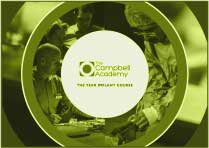
From time to time in these pages, I do a little series of blogs around a subject of things that I've been thinking about or mulling over in my mind or that we have been working on as a team.
I've talked about the concept of a tech stack previously in the blog several times, but over the next few weeks I thought it would be worthwhile just giving some insights into what we've discovered about tech stacks and how they relate to dental businesses (or dare I say it, even any other business).
Firstly, to understand a tech stack, you must realise that now, the way things are in any aspects of business, we cannot avoid the use of technology in any way.
And so, we have a responsibility as people who have leadership positions in organisations to decide which technology we use and why.
Using technology comes with many advantages, but also many disadvantages, not least the cost to small businesses of technology and particularly the ongoing cost of technology once it has been adopted.
For this reason, it's really, really important to choose your technology well and to understand that the better decisions you make in the technology that you integrate into your business, the more likely your business is to be successful.
It's just not good enough anymore to use fear of missing out from your social media friends as the yardstick you use to decide which technology you’ll integrate into your practice.
It's just not good enough to go half a job on designing your tech stack.
If you want to understand how difficult things can be over time when you get your tech stack wrong or don't invest in it, just consider your last trip to any NHS hospital if you can. Better still, talk to someone who you know who is working within the NHS (my wife is a MacMillan nurse for children).
I watch the technology that she uses as she works from home, and I want to bang my head against a brick.
It slows her down so much, it’s so frustrating, and it is so inefficient that you can see how that scales across a whole organisation to create so much wastage and loss and damage.That's why tech stack is important.
And so, in dentistry, we have the opportunity to integrate some of the most extraordinary technological advantages into our practice through our technological adaptation and application, and that can go all the way through the business.
What I'm not talking about here is the decision to buy an intraoral scanner or not.That is no decision at all, we are already done with that by a long way.
What I'm interested in is how that piece of technology, and in particular the one that you choose to purchase ties in with everything else in your business.
I'm also interested in how we use technology away from the clinical setting to make us better, more human and more effective at providing extraordinary customer service and clinical care for patients, which will be the factors that will win in the way dentistry is moving.
And so, in this little series that we're going to run, I'm going to take some of the tech stack components that we've integrated into our new facility over the past 2.5 years.
I will not do an exhaustive list of this, that’s maybe for later.
What I will do is pick some aspects of this that everyone can understand to show how you can get it right in integrating tech and how you can get it wrong.
The first place I will start will be your clinical system and I will use Dentally, our preferred cloud based dental management system as an example of how this can work.
Secondly, I'd like to talk about a communication system for working with your team in and out of the building.
I would absolutely advise that everybody gets off WhatsApp as fast as possible for so many reasons, but I will show you how to use another platform which integrates into everything else.
Thirdly, we can talk about customer relationship management, but only after we have our clinical system sorted as best as we possibly can.
And I will discuss Dengro as an example of CRM, an integrated CRM of service software systems (I'll explain that all later).
I'll also explain how we use Xero as our accountancy tool, which ties in with our dental management system perfectly and makes the whole accountancy and money counting aspect of practice much more transparent and much easier, and able to come from Carl Dunstan’s ‘central point of truth’.
If we're not bored by that stage, we can move on to other parts of the tech stack, including OneDrive and Zoom and various other things that we've integrated into the practice, but they should do for now and so through the next few weeks, you'll see the tech stack series.
Any questions put them here, I'll get them when I get back from my sabbatical.
Blog Post Number - 3313
We have recently launched the 7th episode of our ‘Nothing but the Tooth’ podcast and for this episode Colin explores the in-depth subject of paradigms and the curiosity about why people get stuck in belief systems.
Please have a listen by clicking below!






Leave a comment